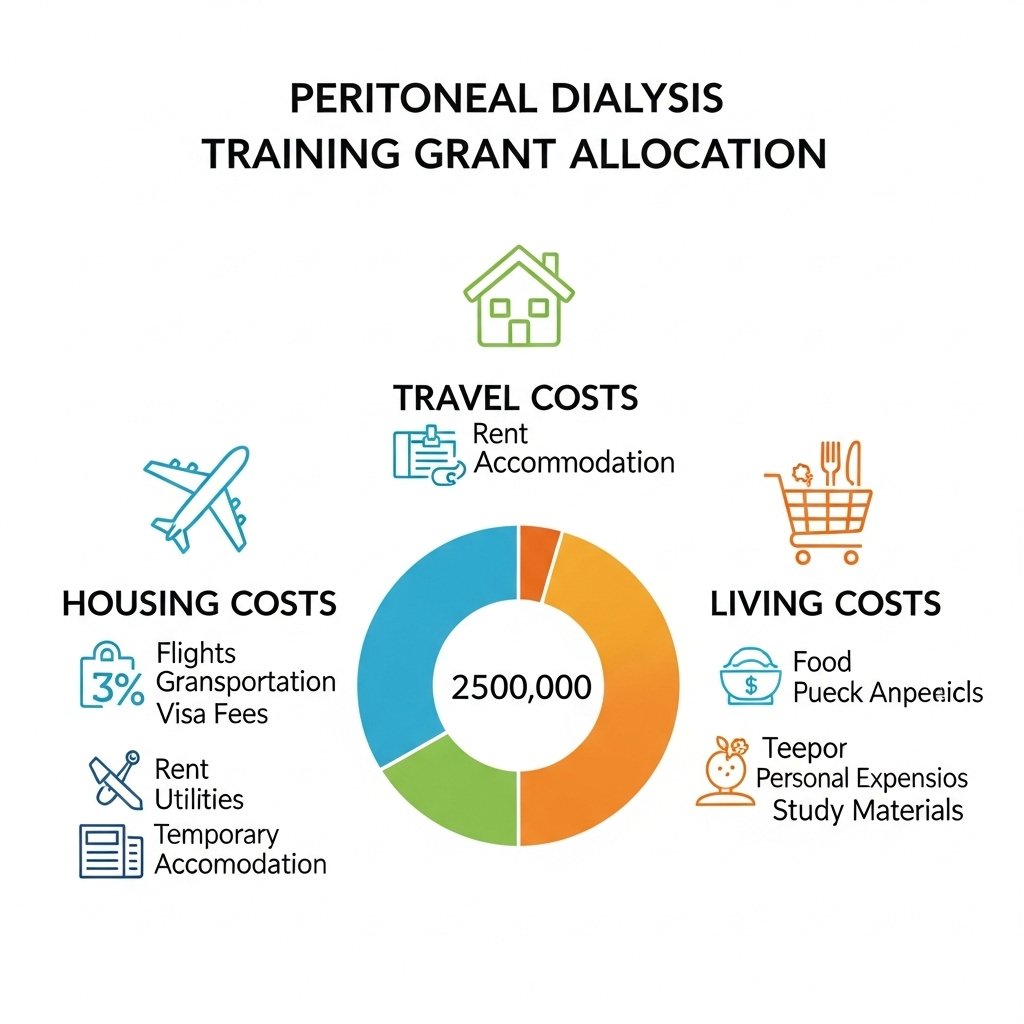The ISPD Fellowships 2026 offer a golden opportunity for dedicated nephrology professionals to elevate their skills and bring world-class peritoneal dialysis (PD) care to their home communities. If you’re passionate about advancing renal medicine and seeking to become a leader in the field, you’ve come to the right place. This guide is designed to be your trusted companion, walking you through every step of the process—from understanding the program’s core mission to submitting an application that truly stands out. Let’s transform your ambition into a successful fellowship experience.

What Exactly Are the ISPD Fellowships?
The ISPD Fellowship program is a prestigious initiative by the International Society for Peritoneal Dialysis (ISPD). Its primary goal is to foster the growth of peritoneal dialysis programs around the world, with a special focus on empowering healthcare professionals from developing countries.
Think of it as an intensive, hands-on training experience. Fellows travel to a renowned PD center (a “Host Institution”) for 8-12 weeks to gain practical skills, learn advanced techniques, and observe best practices in patient management. The fellowship isn’t just about personal development; it’s about knowledge transfer. The ISPD invests in individuals who will return to their home countries and become catalysts for change, either by establishing new PD units or significantly improving existing ones.
According to the ISPD’s official mission, the society is dedicated to advancing the knowledge and practice of PD worldwide, and this fellowship is one of the key ways they bring that mission to life.
Are You the Ideal Candidate? Understanding Eligibility
Before you dive into the application, it’s crucial to see if the program aligns with your profile. The ISPD has specific criteria to ensure they select candidates who can make the most significant impact.
Core Requirements for Applicants
While you should always consult the official ISPD fellowship page for the most current details, applicants generally need to meet the following criteria:
- Age: Be 45 years of age or younger.
- Profession: Be a trainee or a qualified nephrologist. In some cases, pediatric nephrologists and experienced PD nurses may also be considered.
- Country of Residence: Be from a developing country, as defined by the World Bank’s classification of low-to-middle income economies. The ISPD prioritizes applicants who have the greatest potential to improve PD access in underserved regions.
- Language: Possess a good working knowledge of the host center’s primary language.
Your Home and Host Institutions: A Critical Partnership
A unique aspect of the ISPD Fellowship is the required link between your current workplace (Home Institution) and your desired training center (Host Institution).
- Home Institution Support: Your home institution must provide a letter confirming they support your application and are committed to utilizing your new skills upon your return. This demonstrates a long-term vision for PD development.
- Finding a Host Institution: You, the applicant, are responsible for finding and securing a position at an established, high-quality PD center anywhere in the world. You must receive a formal letter of acceptance from them before you can apply for the fellowship.

Navigating the ISPD Fellowships 2026 Application: A Step-by-Step Guide
A successful application is built on careful preparation and attention to detail. Let’s break down the journey into manageable steps.
Step 1: Mark Your Calendar for Key Deadlines
The ISPD Fellowship application window is specific and non-negotiable. Typically, applications open in the summer and close in early October of the year preceding the fellowship. For the 2026 fellowship, you should be prepared to submit everything by October 2025. Keep a close eye on the ISPD website for the official announcement of the exact dates.
Step 2: Assemble Your Application Dossier
You will need to gather several key documents. Start compiling these well in advance to avoid any last-minute stress.
- The Completed ISPD Application Form: Downloaded directly from their website.
- A Detailed Curriculum Vitae (CV): Highlight your training, clinical experience (especially in nephrology), and any research or publications.
- Letter of Acceptance from Your Host Institution: This formal letter must confirm your training spot, the dates of your fellowship, and the name of your supervisor.
- Letter of Recommendation from Your Home Institution: This should be from your current head of department or supervisor.
- A Comprehensive Training Plan: This is arguably the most important part of your application.
Step 3: Craft a Winning Training Plan
Your training plan is your chance to convince the review committee of your vision. It’s not just a list of tasks; it’s a strategic proposal. In my experience advising applicants for international medical fellowships, the single most powerful element is a clear, demonstrated link between the proposed training and a tangible need back in your home country.
Your plan should clearly outline:
- Your Learning Objectives: What specific skills do you want to acquire? (e.g., “Master the technique for laparoscopic Tenckhoff catheter insertion,” “Develop expertise in managing complex PD-related infections.”)
- The Justification: Why are these skills needed in your community? Use data if possible. (e.g., “Our region has a high rate of catheter migration, and no local expert can perform advanced placement techniques.”)
- Your Proposed Activities: How will you achieve your objectives at the host center? (e.g., “Shadow Dr. Smith in the PD clinic,” “Assist in 20 catheter insertions,” “Attend weekly grand rounds.”)
- A Clear Timeline: Map out your activities over the 8-12 week period.
Step 4: Secure Strong Letters of Recommendation
Choose recommenders who know you well and can speak to your clinical skills, work ethic, and potential as a future leader.
- Ask early: Give them at least a month’s notice.
- Provide materials: Give them your CV, your training plan, and a link to the fellowship page so they understand the context.
- Gently remind them: A polite follow-up a week before the deadline is perfectly acceptable.
What Does the Fellowship Cover? Funding and Benefits?
The ISPD Fellowship provides a grant of up to $5,000 USD. This funding is designed to make the opportunity accessible and alleviate financial barriers. It is intended to cover essential expenses such as:
- Round-trip airfare to the host institution.
- Accommodation for the duration of the fellowship.
- Basic living expenses.
It’s important to note that the grant does not typically cover your salary, institutional fees at the host center, or benefits for your family. You’ll need to budget carefully to ensure the grant meets your needs for the entire training period.

Your Journey to PD Expertise Starts Now
Applying for the ISPD Fellowships 2026 is a significant step in your professional journey. It requires planning, dedication, and a clear vision for how you will use this incredible opportunity to serve patients. By carefully preparing your application, securing strong institutional support, and articulating a compelling training plan, you can position yourself as an outstanding candidate.
Unlock Your Potential: Navigating the Saïd Foundation Scholarship 2026-2027
The One Young World Leading Scholarship Relaunched with Rolling Applications
FAQs
1.How long is the fellowship training period?
The training period is typically 8 to 12 weeks. The exact duration will be agreed upon between you and your host institution.
2.When are the fellowship results announced?
According to the typical ISPD timeline, applicants are usually notified of the outcome in December following the October application deadline.
3.Can I apply if my home institution doesn’t have a PD program yet?
Yes, absolutely! The ISPD strongly encourages applications from individuals who want to establish a new PD program. In your application, you must demonstrate strong institutional support and a clear, feasible plan for launching a PD unit after your training.










